Reaktor Library WaveWeaver commentary
This is yosi from Chillout with Beats.
I've been looking inside Reaktor lately, and learning modular makes it easier to understand Reaktor.
I had touched Reaktor in various ways before, but I didn't understand it at all and gave up.
However, when I look at it again, my knowledge of modularity has been very useful and I have become able to understand parts that I could not understand before.
It became modular again. (I will write more modular material)
Let's get back to the main subject.
Last time, I wrote how to link WaveWeaver of Reaktor Factory Library and VSTi by MIDI, so please refer to the following article for how to link.
Google Translate of the manual. (In addition, I will explain the points)
Google Japanese translation of WaveWeaver manual + α
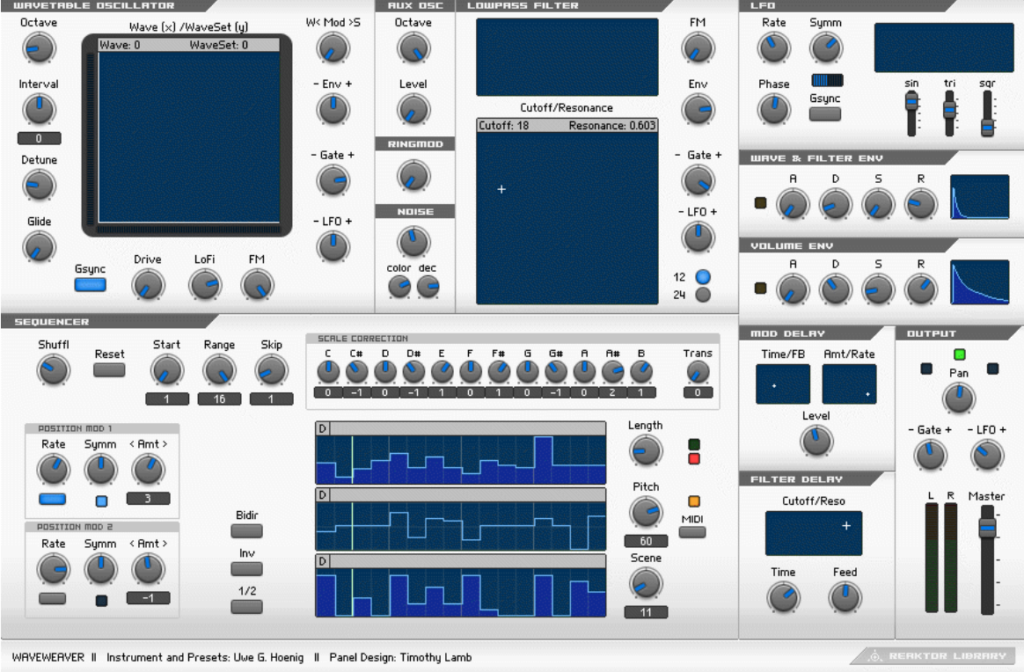
The WaveWeaver ensemble uses wavetable compositing to produce a variety of subtle or harsh tones and rhythmic pads. The WaveWeaver oscillator is actually a set of several short loop sound files, each used as an oscillator waveform.The sound files for each wavetable can be blended together and you can use the XY pad to select from them at the same time to change the starting point of the loop.With the built-in sequencer with scale correction, you can create your own shift groove. You can use MoDelay and FilterDelay to add some effects to your sound.

Here, we will focus on the sequencer for translation.
The Sequencer
A three-part sequencer is started and tempo controlled by a global MIDI clock.
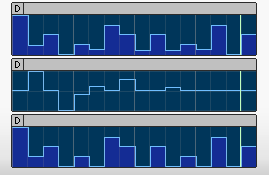
You can add a swing with the shuffle control.

The start point of the sequence and the length of the loop can be adjusted with the start knob and range knob.

Pressing the Reset button in the Clock section forces the sequence to reset to the position determined by the Start knob.
![]()
The Skip knob sets the number of steps in the sequencer's event table that are left as the sequence progresses.
![]()
The Bidir and Inv buttons change the playback order of the sequence steps. Bidir runs the sequence forward and then backwards, while Inv reverses the playback order.


Inv will play the sequence backwards while the button is pressed.It seems that it can be used for live performances.
These controls are very useful, for example, for non-destructive changes to the characteristics of a performance sequence.
You can also use two Position Mod LFOs to modulate the current playback position of the sequencer over time.In each case, you can invert the amount of modulation and control the symmetry of the LFO waveform with the Symm knob.

The top line of the sequencer controls the length of each note.The middle row allows you to program the pitch sequence, while the lower row sets the gate value.The gate value affects the velocity or volume of each step.

You can use the Pitch knob to offset the pitch and transpose the sequence. Turn on the MIDI switch next to Pitch to transpose the bass pitch of your sequence and play chords on your MIDI keyboard.You can use these controls to create complex modulation arpeggiations.

The scale correction section gives you the option to map the pitch data to a specific scale (c major or pentatonic scale, Dorian mode, etc.).This allows you to transpose the sequence pitch using your keyboard to create subtle, dynamic effects.

The following is an explanation using functions not described in the manual.
Scen can switch scenes in a sequence.There are up to 127 in all, so if you switch this, I think that you can prepare well even at live concerts.
![]()
1/2 can halve the playback speed of the sequence.
![]()
Demo with modulation
Reaktor Library WaveWeaver commentary summary
Even if it sounds properly, if you adjust the scale, the sound will not come off, and you can increase the random elements.
Also, if you make a solid sequence of scales and switch scenes, you can make enough.
Since the sequence part is well made, it can be used quite a lot.
I will increase the knowledge that can be remodeled and publish it.
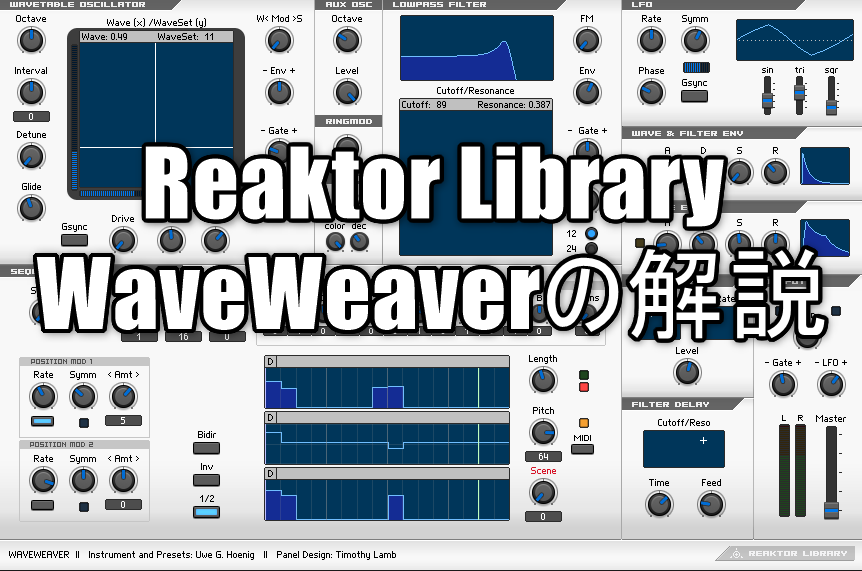

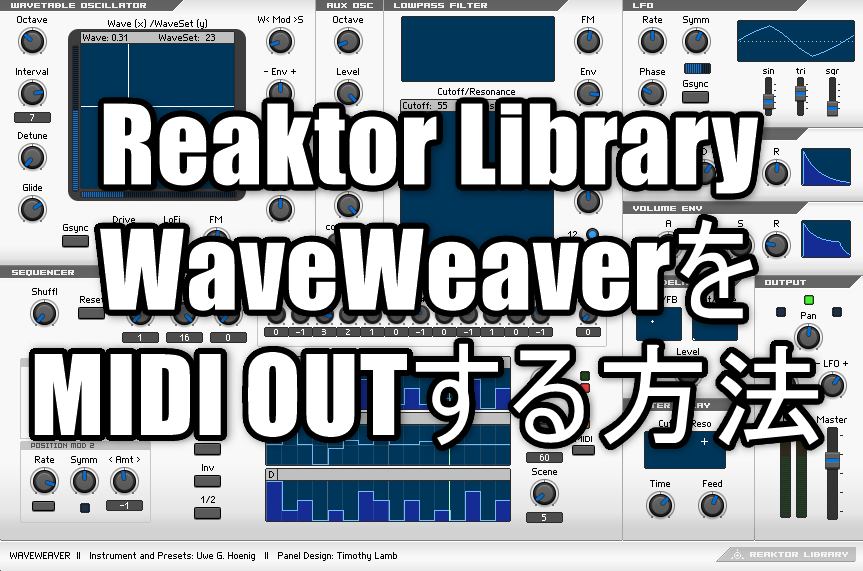
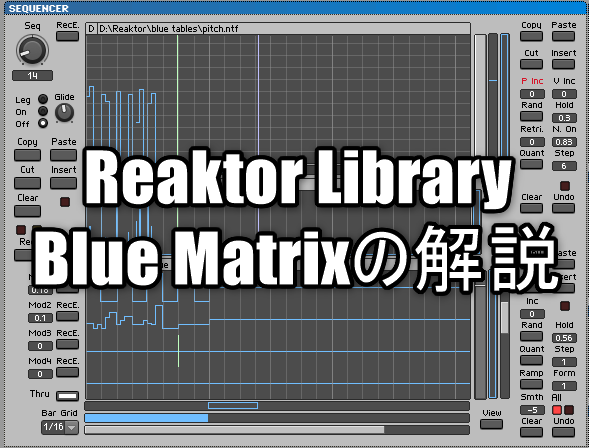
Comment